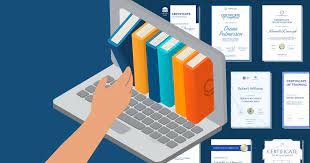
In the modern era, eLearning has taken a front seat in education, thanks to its flexibility, accessibility, and cost-effectiveness. However, managing and delivering digital learning experiences can be a complex task. This is where eLearning automation comes into play. Automation in eLearning is transforming how courses are created, delivered, tracked, and improved.
Understanding eLearning Automation:
eLearning automation involves using software tools to create automated processes for various aspects of the digital learning experience. It ranges from automating course enrollments and reminders to personalized learning paths and data analysis. The goal of automation is to reduce the repetitive tasks that can bog down educators and administrators so that they can focus on more high-value activities such as content creation and student engagement.
Benefits of eLearning Automation:
1. Efficiency and Time Saving: By automating routine tasks like enrolling students or grading quizzes, educators save significant time.
2. Personalization: Automated tools can track individual learner’s progress and tailor content delivery based on their needs.
3. Scalability: Automation makes it easy to scale up eLearning initiatives to reach more learners without additional administrative burden.
4. Enhanced Learning Experience: With automation handling the administrative side, educators can focus on improving the learning experience.
5. Data-Driven Insights: Automated tracking provides robust data analytics, helping educators understand learner behaviors and outcomes for continuous improvement.
Key Components of eLearning Automation:
1. Learning Management Systems (LMS): These are platforms where you can host your courses and which often feature built-in automation tools.
2. Customer Relationship Management (CRM) Integration: This enables the seamless exchange of information between your LMS and CRM systems.
3. Automated Communications: Tools like automated emails or push notifications keep learners engaged and informed.
4. Artificial Intelligence (AI): AI can offer personalized learning experiences by adapting content based on real-time learner performance.
5. Analytics and Reporting: Real-time reporting tools automate the process of tracking learner progress.
Steps to Implement eLearning Automation:
1. Assess your needs: Determine what tasks are most time-consuming or could be better served with automation.
2. Choose the right tools: Pick an LMS or other software that supports automation in the ways you need.
3. Develop your content with automation in mind: Create courses that can easily integrate with automated elements like quizzes or interactive elements.
4. Train your team: Ensure that educators and administrators are comfortable with the new tools.
5. Monitor and refine: Use data analytics provided by automated systems to tweak both your content delivery and automation strategies over time.
The Future of eLearning Automation:
As technology evolves, so too will eLearning automation capabilities, particularly with AI becoming more advanced. Educators can expect more personalized approaches to learning paths, adaptive assessments, and real-time content modification.
Conclusion:
eLearning automation offers a smarter way to support learners and educators alike by streamlining operations, personalizing learning experiences at scale, increasing engagement through dynamic communication, and leveraging data analytics for improvements in educational outcomes.
By embracing these technological advances, institutions can ensure that they stay at the forefront of educational innovation while delivering an exceptional learning experience that meets the needs of today’s tech-savvy students.
Whether it’s through designing more intuitive LMS platforms or integrating cutting-edge AI applications into learning structures, the scope for enhancing education through automation is vast, promising a future where technology continuously enriches our quest for knowledge and skill development.
